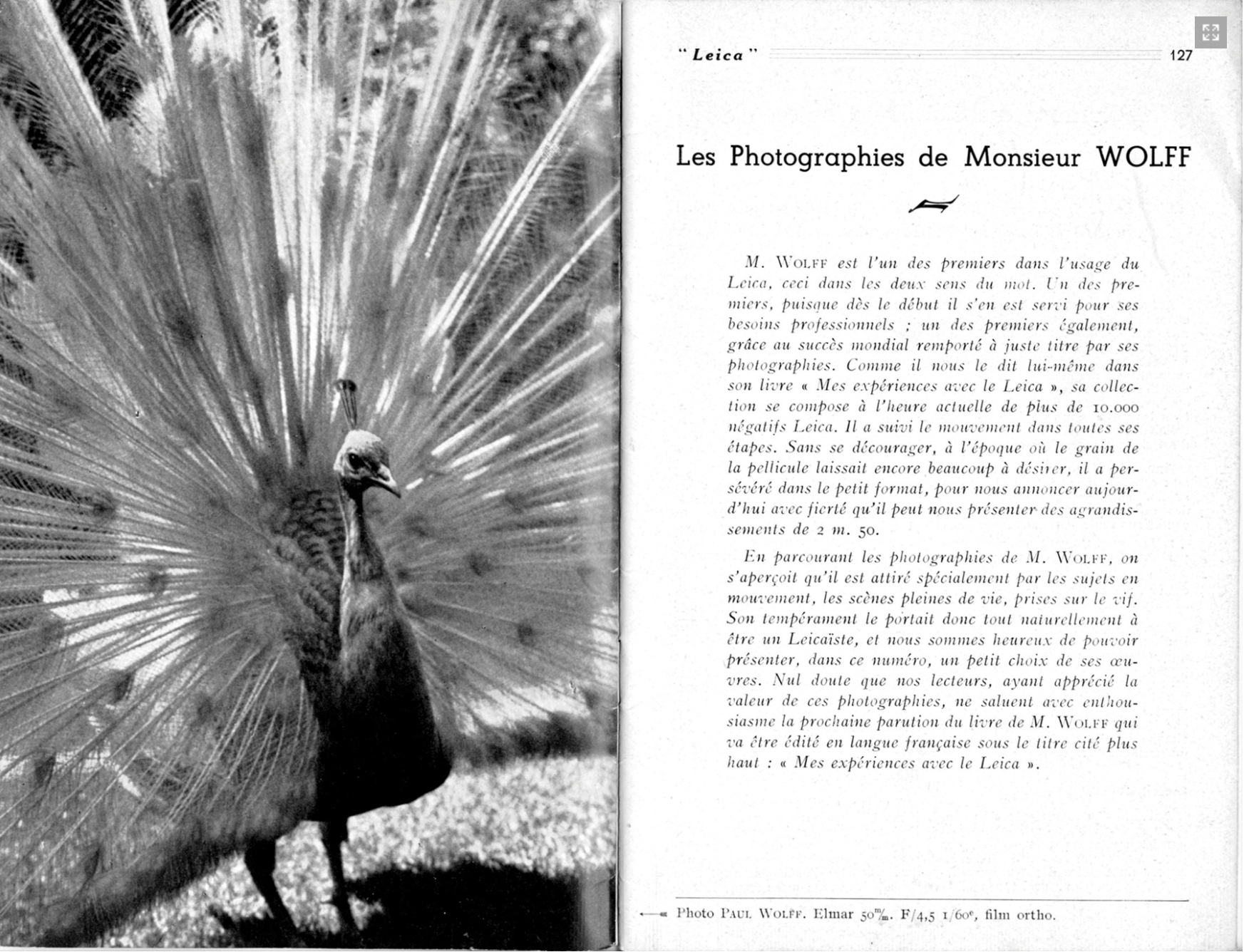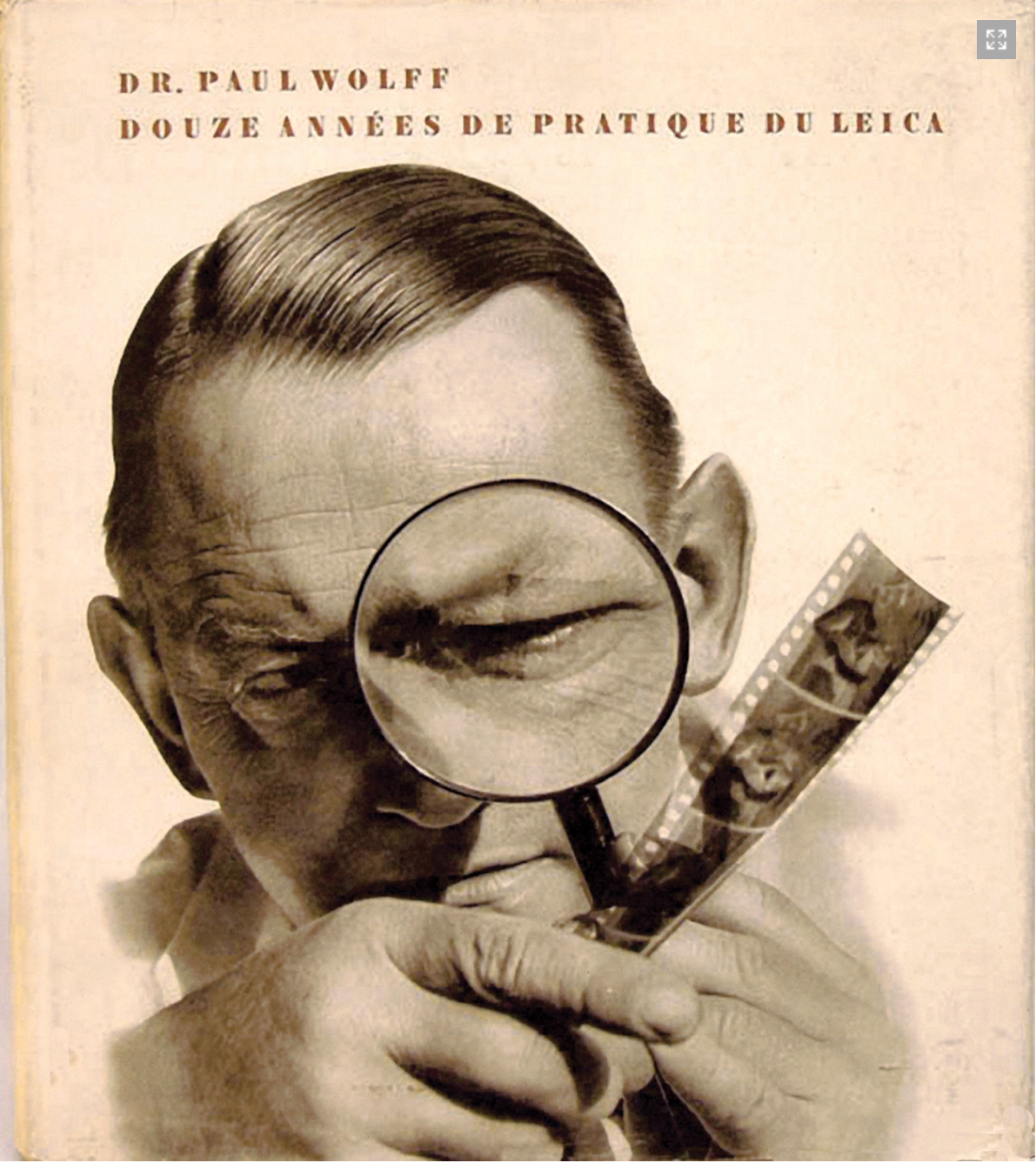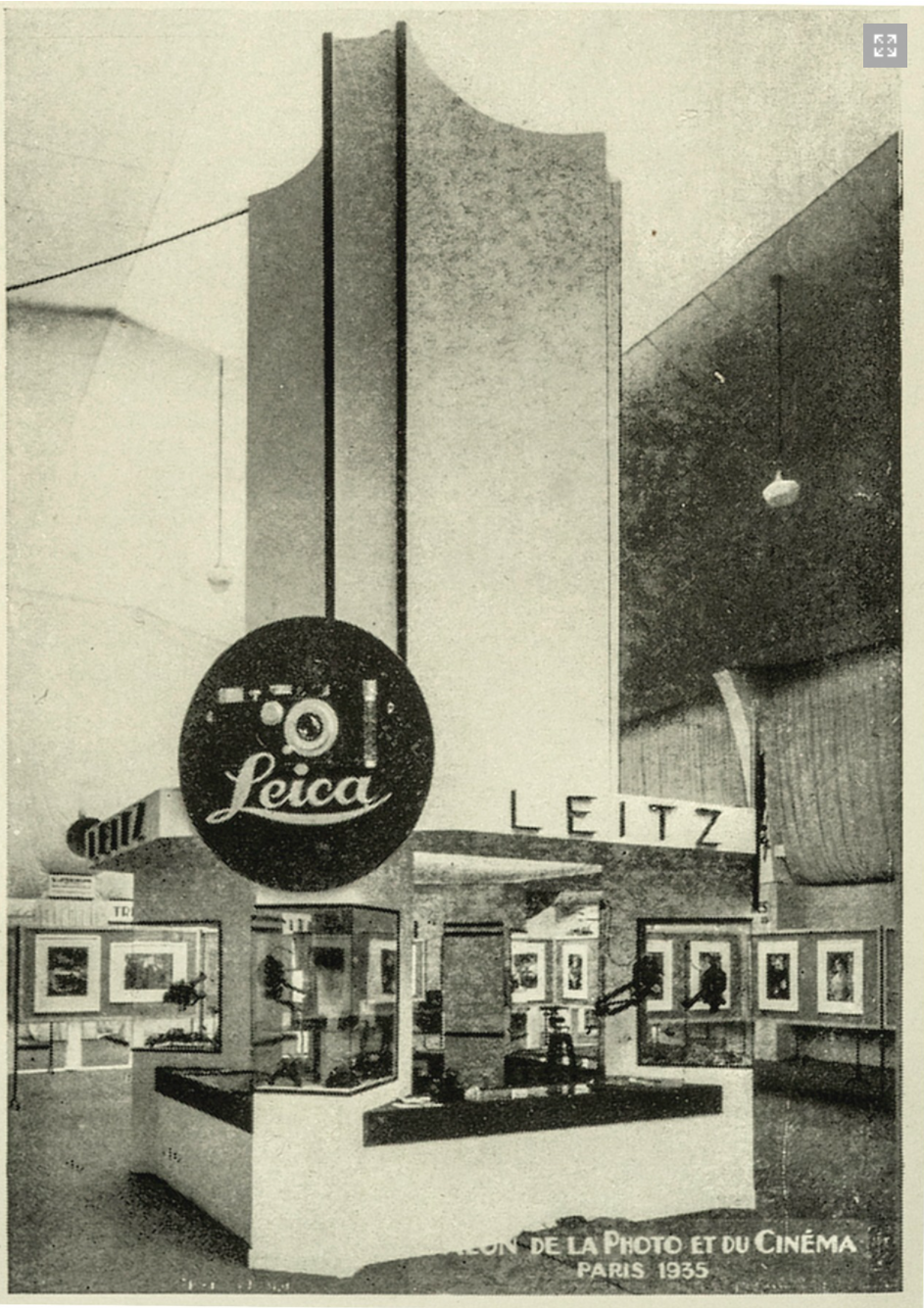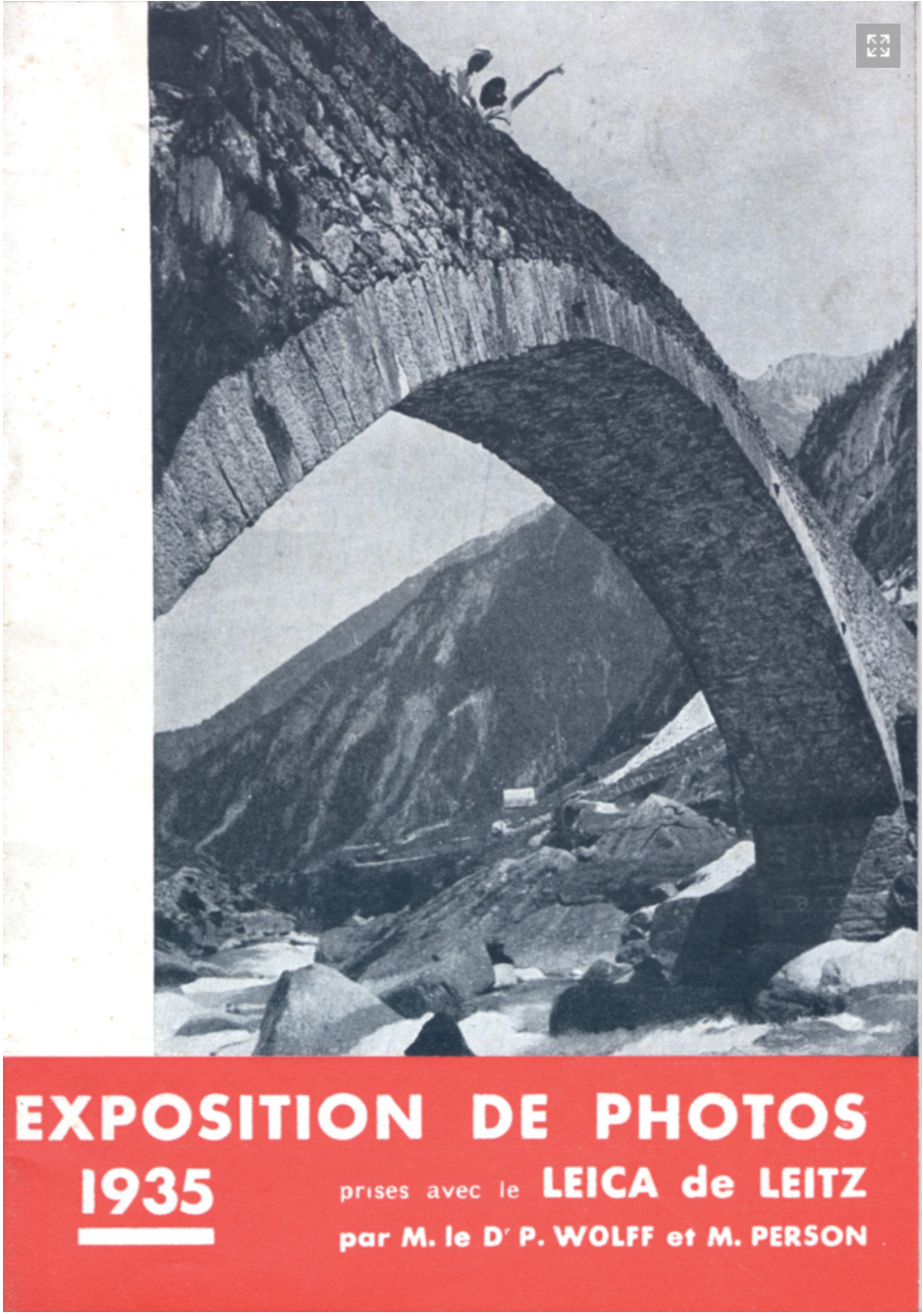A 1935 Leitz Photo Exhibition
In Viewfinder 36/3, 2003, I wrote about a 1935 French photo salon, sponsored partially by E. Leitz Wetzlar, which promoted the work of Dr. Paul Wolff and also Alfred Person, both of whose new books with Leica photos were about to be published. I had done this because I had received, from member Pierre Jeandrain, a facsimile of that exhibition’s catalogue, which was in the same format as that from the more famous 1933 photo show by Dr. Wolff: Meine Erfahrungen mit der Leica. Pierre wrote me that he had discovered information about this salon “in the French magazine ‘Leica’ No. 8 for April, 1935”
.Last year April, at what some of us have termed “The Louisville Box Festival”, a partial run of that French magazine turned up in one of LHSA’s historical boxes. Not only was the issue that Pierre had seen there, but also another one devoted to images by Dr. Wolff. The author of the text in both cases was the indefatigable polymath Marcel Natkin, also written about in Viewfinder pages (39/2, 2006). I scanned those pages for my files, and felt that a brief Viewfinder article was in order, to show us how things looked “‘way back then”, and to share the flavor of the writing.
In his article about the Salon, Natkin begins by gently teasing the proud new owners of Leica cameras – which likely included himself – who descended on the scene with their equipment, even though a portion of the salon was not Leica-related. He goes on in the same vein: “A veritable labyrinth of photographs was spread on 400 meters of surface surrounding the Leica booth, where we were able to admire the latest novelties relating to our equipment”. He then speaks of Dr. Wolff’s current notoriety, goes on quite a bit about being impressed with Alfred Person’s pictorial images (powerful portrait heads twice life-size, catching fugitive expressions, mastery of detail in still lives, and so forth), and finally devotes the major portion of his two-page write-up almost entirely to the Leica’s advantage over larger format cameras. “But the goal was not to prove that Leica can do the same and often better than a big device. We just had obvious proof that the majority of the subjects dealt with here could only be managed with the Leica”. (This was due to issues like DOF, camera portability / maneuverability, or the speed of shooting). The reader actually hears very little about the salon, its Leitz booth, or the images; rather it is the magic of the Leica camera in the hands of the knowledgeable photographer that has impressed him. Natkin does say the display images from the two Leica photographers are in 50 x 60 cm format (approximately 20 x 24 in): no slouch, but hardly the 2 x 3 meters of the Meine Erfahrungen exhibit of two years earlier.
Accompanying the text is a somewhat grainy image of the display, with the Leitz booth in its center, which I am sharing. It is quite a modern-looking installation indeed, which would not look out of place today.
Just a short while later, in ‘Leica’ No. 11 for September, 1935 which features “The Photographs of M[onsieur] Wolff”, Natkin prefaces the selection of eleven of Dr. Wolff’s images with some hagiographic prose, translated here in its entirety. “M. Wolff is one of the first in his use of the Leica, here in two senses of that term. One of the first since he has used it professionally since its beginning; also one of the first due to the global success he has won for his photos. As he tells us himself in his book “My Experiences with the Leica”, his collection of images today comprises more than 10,000 Leica negatives. He has followed each step of the [small camera] movement. Without becoming discouraged he has persevered through that period where film grain left much to be desired, only to tell us today with pride that he has been able to make enlargements of 2.5 meters.
“Browsing M. Wolff’s images, one can see that he is drawn especially to subjects in motion, to scenes full of life, quickly taken. His temperament is that of a natural Leicaïste and we are happy to be able to present, in this issue, a small portfolio of his work. No doubt our readers, having appreciated the value of his photographs, will welcome with enthusiasm the upcoming release of M. Wolff’s next book, which will be entitled in French as above: ‘Mes expériences avec le Leica’.” Actually this was not technically true, as the title is “Douze Année de Pratique du Leica: Résumé Historique” (12 Years of Leica Practice: an Historical Summary). The meaning is the same, but not the ‘bon mot’ Natkin intended.
If we view the Leica camera of the 1930’s as a technological breakthrough that was the paradigm-changing equivalent of today’s iPhone (I am indebted to Thorsten Overgaard for the analogy) we can begin to appreciate the excitement we feel in Natkin’s presentation.





